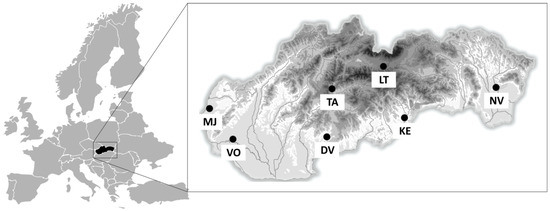Published Date
Sustainability 2016, 8(9), 906; doi:10.3390/su8090906
Author
For further information log on website :
http://www.mdpi.com/2071-1050/8/9/906?trendmd-shared=0
Sustainability 2016, 8(9), 906; doi:10.3390/su8090906
Author
1
Faculty of Natural Sciences, Matej Bel University, Tajovského 40, Banská Bystrica 97401, Slovakia
2
National Agricultural and Food Centre—Soil Science and Conservation Research Institute Bratislava, Regional Station Banská Bystrica, Mládežnícka 36, Banská Bystrica 97421, Slovakia
3
National Agricultural and Food Centre—Grassland and Mountain Agriculture Research Institute, Mládežnícka 36, Banská Bystrica 97421, Slovakia
*
Author to whom correspondence should be addressed.
Academic Editor: Marc A. Rosen
Received: 13 June 2016 / Revised: 1 September 2016 / Accepted: 2 September 2016 / Published: 7 September 2016
Abstract
Earthworms are a major component of soil fauna communities. They influence soil chemical, biological, and physical processes and vice versa, their abundance and diversity are influenced by natural characteristics or land management practices. There is need to establish their characteristics and relations. In this study earthworm density (ED), body biomass (EB), and diversity in relation to land use (arable land—AL, permanent grasslands—PG), management, and selected abiotic (soil chemical, physical, climate related) and biotic (arthropod density and biomass, ground beetle density, carabid density) indicators were analysed at seven different study sites in Slovakia. On average, the density of earthworms was nearly twice as high in PG compared to AL. Among five soil types used as arable land, Fluvisols created the most suitable conditions for earthworm abundance and biomass. We recorded a significant correlation between ED, EB and soil moisture in arable land. In permanent grasslands, the main climate related factor was soil temperature. Relationships between earthworms and some chemical properties (pH, available nutrients) were observed only in arable land. Our findings indicate trophic interaction between earthworms and carabids in organically managed arable land. Comprehensive assessment of observed relationships can help in earthworm management to achieve sustainable agricultural systems. View Full-Text
Keywords: earthworm; agro-ecosystem; sustainability; climate; soil type; soil moisture; soil temperature; arthropod; ground beetle; carabid
▼ Figures
This is an open access article distributed under the Creative Commons Attribution License which permits unrestricted use, distribution, and reproduction in any medium, provided the original work is properly cited. (CC BY 4.0).
http://www.mdpi.com/2071-1050/8/9/906?trendmd-shared=0






No comments:
Post a Comment